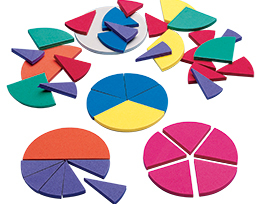Visual Models for Introducing Fractions in Third Grade
- By Cindy O'Neill
- Apr 27, 2018
"Would you rather have half of one chocolate bar or a quarter of a different chocolate bar? Most popular answer: It depends on the size of the chocolate bars! As teachers know, the relative size of fractions depends on how the whole is defined. Authors Jim Callahan and Marilynn Varricchio address these common problems with fractions in their new book Fractions Made Easy (Didax, 2016). Drawing on material from the book, we will focus on how visual models can be used to support a solid conceptual understanding of fractions in third grade.





 © 2023 Didax, Inc. All Rights Reserved.
© 2023 Didax, Inc. All Rights Reserved.